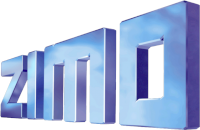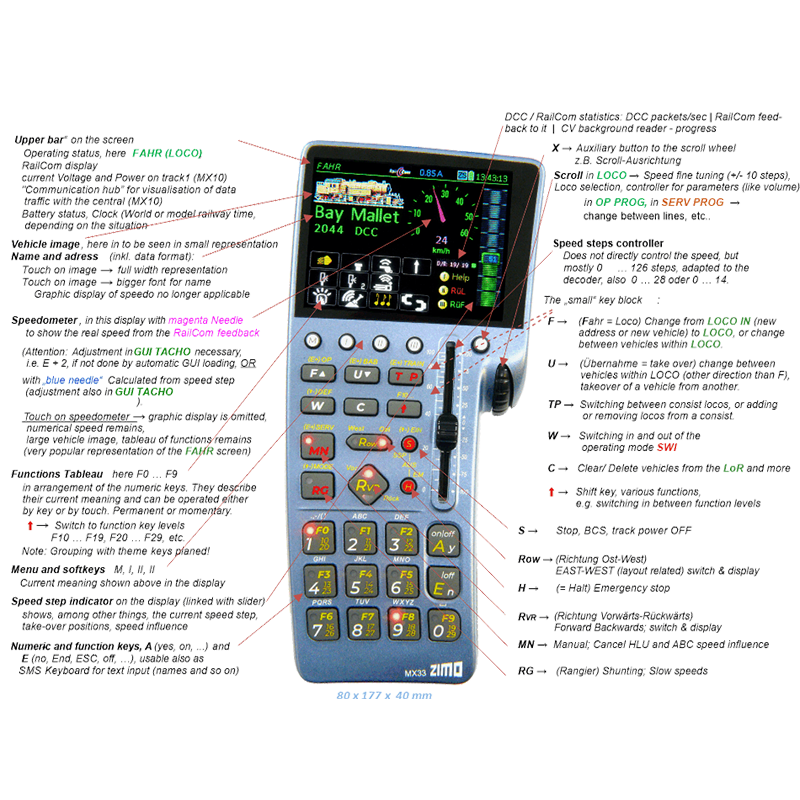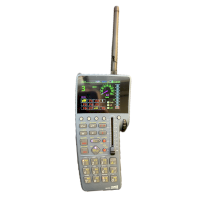

$595.98

The curved design, which has been slightly modified from generation to generation, has already become a ZIMO trademark. The basic idea behind this shape of the housing, to be able to use the device as a tabletop driving desk or also as a walk-around hand controller, has proven itself with users for many years.
ZIMO controllers are available in two versions:
The operation is practically identical in wired or wireless mode, only certain loading sequences (photos, larger files,...) may take longer or be prevented via wireless.
To make the software update as easy as possible, a USB socket (host) is built in (on the MX33 a USB-C), to which a commercially available memory stick (flash drive) with the new software version downloaded from the ZIMO website is plugged in.
Additional locomotive image collections, operating languages, interlockings, etc., are loaded into the unit in this way via a USB flash drive.
ZIMO consoles do not contain any special hardware for "RailCom", as the detectors are located in the central unit and distributed in external modules (local detectors). The RailCom information reaches the MX33 like all other data via the CAN bus.
RailCom, i.e. the ability of the decoders to send feedback to the system, is a fundamental part of the ZIMO system. Of course, operation is also possible together with decoders that do not handle RailCom; but RailCom capable decoders are better, namely those that offer more than just CV programming and reading, as well as reporting their own address.
As is usual with modern devices, the aim is that operation is "intuitively" feasible without detailed study of the operating instructions, which of course is only possible to a limited extent. During use, the user will find information on the screen about the current options, e.g. the current assignment of the softkeys and other flexibly assigned keys. If required, a context-related help file can also be displayed (not available everywhere).
The touch capability of the screen is mainly used to change the display mode (switching between small and large locomotive photo, switching between tacho scales, setting points in the future interlockings, etc.).
The operating states "SERV PROG", programming and reading CVs in "Service mode" (actually a relic from the early days of digital technology) and "OPMODE PROG", programming in "Operational mode" ("PoM"), also form a focal point. Also decoders of other manufacturers than ZIMO are supported by CV handling with command line storage and CV set management, but ZIMO decoders in an extended scope.
The operating state "WEI" (so called for traditional reasons) groups turnouts and signals independently of their connection locations at different decoders and modules in "switch panels", where they are operated by numeric key or touch.



Please wait! Content loading.....
